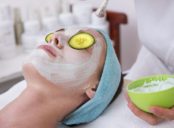Foundation rosacea: A Comprehensive Guide for Makeup Enthusiasts

Introduction
In recent years, foundation rosacea has gained significant attention among individuals seeking to achieve flawless skin. This comprehensive guide will provide an in-depth overview of foundation rosacea, including its definition, various types available in the market, their popularity, and quantitative measurements associated with them. Additionally, this article will delve into the differences between different foundation rosacea options and provide a historical review of their pros and cons.
I. Overview of Foundation Rosacea

Foundation rosacea refers to a range of makeup products specifically designed to provide coverage for individuals with rosacea, a chronic skin condition characterized by facial redness, flushing, and sometimes small red bumps. These foundations are formulated to even out skin tone, mask redness, and provide a natural-looking finish.
II. Types and Popularity of Foundation Rosacea
There are several types of foundation rosacea available, each catering to specific skin concerns and preferences. Some popular options include:
1. Mineral-based foundations: These foundations contain natural minerals, such as titanium dioxide or zinc oxide, which have soothing properties and offer broad-spectrum sun protection.
2. Green-tinted foundations: Green-tinted formulas help counteract redness by neutralizing the color. They are often recommended for individuals with prominent facial redness.
3. Liquid foundations: These foundations are available in various coverage levels, ranging from sheer to full coverage. They offer a wide shade range to match different skin tones.
4. Powder foundations: Powder foundations are ideal for individuals with oily or combination skin. They provide a matte finish and can help absorb excess oil.
5. Serum foundations: Serum foundations are lightweight and offer buildable coverage. They often contain skin-benefiting ingredients like hyaluronic acid and antioxidants.
Quantitative Measurements
When it comes to evaluating foundation rosacea, several quantitative measurements are essential to consider. These include:
1. SPF rating: Many foundation rosacea products offer sun protection. SPF ratings indicate the level of protection against harmful UV rays.
2. Color range: Foundation rosacea should ideally have a wide color range to cater to different skin tones and undertones.
3. Coverage duration: The longevity of foundation coverage is crucial for individuals with rosacea, as their skin may require longer-lasting products.
4. Ingredients: Quantitative analysis of ingredients helps determine potential irritants or allergens that may exacerbate rosacea symptoms.
Differences in Foundation Rosacea
Different foundation rosacea options can vary in various aspects, including coverage, finish, and compatibility with specific skin types. Factors that differentiate foundations include:
1. Coverage level: Some foundations provide sheer coverage, while others offer full coverage. Individuals with mild to severe rosacea may opt for different coverage levels based on their needs.
2. Finis Foundations can have different finishes, such as matte, dewy, or satin. This allows individuals to select a finish that complements their skin type and desired look.
3. Formulation: Liquids, creams, powders, and serums all have distinct textures and application methods. Considering personal preferences, compatibility with skin type, and ease of use can aid in selecting the right foundation.
Historical Review of Pros and Cons
Over the years, foundation rosacea has evolved, bringing both advantages and disadvantages. Historically, some pros and cons include:
1. Pros:
a. Increased awareness and availability: The market now offers a wider range of foundation rosacea options, catering to different skin concerns and preferences.
b. Improved formulations: Innovations in foundation rosacea have led to long-lasting, lightweight, and breathable formulas that provide adequate coverage.
c. Skincare benefits: Certain foundations now include skincare ingredients, providing additional benefits to individuals with rosacea.
2. Cons:
a. Limited shade ranges: In the past, finding foundation rosacea in diverse shades was challenging, making it difficult for individuals with darker skin tones to find suitable options.
b. Potential skin irritation: Some foundation rosacea formulas may contain ingredients that can irritate sensitive skin, exacerbating rosacea symptoms.
[INSERT VIDEO HERE]
Conclusion
Foundation rosacea has revolutionized makeup options for individuals with rosacea, offering a solution to mask redness and achieve an even complexion. By understanding the various types available, quantitative measurements, differences between options, and a historical overview of pros and cons, makeup enthusiasts can make informed choices when selecting foundation rosacea. Remember, finding the right foundation rosacea for your skin is crucial for achieving a flawless look while keeping your skin’s health in mind.





















